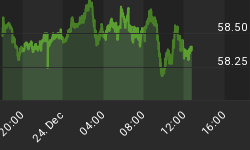The Ropespinner Conspiracy is a novel by Michael M. Thomas, a former investment banker who writes enjoyable novels about high finance.
The title relates to Lenin's observation the "Capitalism will sell us the rope with which we hang it". Published in 1987 the story is about a brilliant but insidious Soviet conspiracy to infiltrate the U.S. banking system and corrupt it to its own destruction.
The attempt starts in the late 1930s with a brilliant young economist who fell for Keynes' persuasions in more ways than one. Waldo Chamberlain becomes a Harvard economics professor and rises to pre-eminence. He is also KGB controlled. The plan is implemented through his bright and presentable nephew, Mallory, whose successful career takes him to the top of a big New York bank. Altogether, the trio introduce a number of "new" concepts to banking.
The KGB controller is knowledgeable and quotes Bagehot in describing the scheme -
"But error is far more formidable than fraud: the mistakes of a sanguine manager are far more to be dreaded than theft by a dishonest manager."
The young protege, Mallory, rises with his bank until-
"There was no question that he and CertBank had been the pathfinders. Man and institution had combined to transform the face and nature of banking and, with it, the face and nature of whole economies, of nations. Mallory and CertBank had perceived markets and opportunities ... and had grasped the business of banking might be redirected, its nature irrevocably, irresistibly altered."
The Ropespinner plan was to take the banks, then set midway between Main Street and Wall Street, and return them to Wall Street.
The Glass-Steagall Act of 1933 separated commercial banking from investment banking. Beyond that, it was another example of post-bubble recriminatory legislation. The anti-bubble act (England) with the South Sea disaster of 1720 was taken off the books just in time for the bubble that blew out in 1772.
Glass-Steagall was passed in 1933 and repealed in 1999, which belatedly acknowledged that commercial banking had already embraced Wall Street.
"The problems were to legally find a way around the Fed's grip: How to "dehabituate" the relationship between banks and their depositors: how to engineer a massive increase in money supply (almost impossible to have a financial cataclysm otherwise); how to destabilize exchange rates, perhaps eliminate the gold standard; how to ignite a commodity-driven inflation, each was so rich in possibility."
This was to be implemented by Certbank's rising star, Mallory, who would-
"Then set the Cert's shoulder to the shiny new wheel and proclaim and propagate the new gospel from the podium of the bank's eminence, other banks would follow the lead, frequently hasty, since reflection and competitiveness were ill-matched bedfellows, and within weeks the new gimmick would be as accepted and widespread in American banking as if it had been proven over the years and certified from heaven by Morgan himself."
Preston marveled, 'The lad's the best talker of claptrap I ever heard, better than FDR!'"
The novelist develops the "new" banking ideas in a readable manner. Starting with negotiable CDs, EuroDollars, banks as a "growth" industry leading to the struggle for "market share", and total commitment to "total return", all the major changes in banking are placed in perspective.
Waldo plants the idea of negotiable CDs and, as the market for them developed, a traditional banker wonders:
"If a short-term obligation could successfully be renewed time after time, should it not be viewed as truly long-term capital and as a legitimate source for funding longer-term loans?
Waldo listened to these arguments and nodded sagely, and smiled inwardly. If ever there was a surefire recipe for banking disaster, it was to borrow short and lend long."
A book reviewer at the New York Times described "Ropespinner" as "a sophisticated piece of work - the story generates plenty of tension, and it is anchored in a series of well-documented and well-described settings."
It is a parable of our era and a more timely read now than in 1987. As far as plausibility goes, it's not too far off the mark.
Innovative banking always seems to go with experiments in currency. It's fascinating that there are two different views on arbitrary expansion of currency. Orthodoxy claims that it is an essential tool of policy making but military intelligence has used it for destructive purposes.
The Brits have been masters of "war by other than gentlemanly means". In order to destabilize the colonial economy, the British, during the American War of Independence, invidiously introduced huge amounts of counterfeit colonial currency. American inflation was sufficient to raise short interest rates to 10,000%.
At other times inordinate amounts of currency were clandestinely introduced into an enemy's country with hopes of destabilizing their economy and ability to fund their war effort.
It was done during World War II as well as to Argentina during the Falklands War in 1982.
In the post-bubble contraction of the early 1980's two Wall Street economists, nicknamed by the street as "Dr. Death" and "Dr. Doom", were pleading that the Fed should "open the taps" or something worse would happen.
Obviously the understanding of credit/currency expansion by spooks in intelligence is vastly different to that of academics and Wall Street economists.
The fictional Waldo, Mallory, and the KGB controller would be pleased with today's "new" banking practices.
















